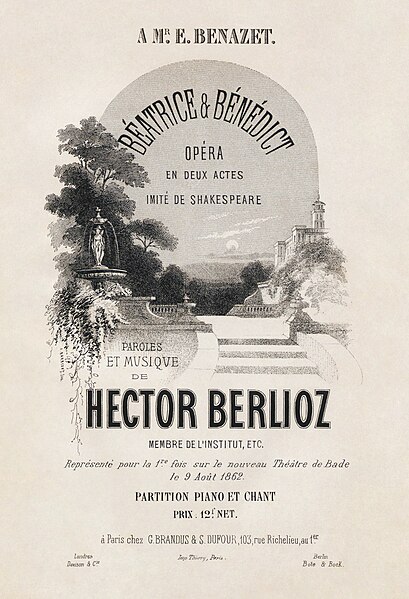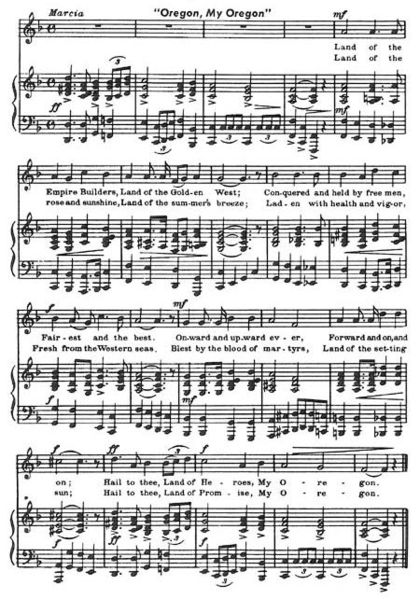Sheet music is a handwritten or printed form of musical notation that uses musical symbols to indicate the pitches, rhythms, or chords of a song or instrumental musical piece. Like its analogs – printed books or pamphlets in English, Arabic, or other languages – the medium of sheet music typically is paper. However, access to musical notation since the 1980s has included the presentation of musical notation on computer screens and the development of scorewriter computer programs that can notate a song or piece electronically, and, in some cases, "play back" the notated music using a synthesizer or virtual instruments.
Title page for the first-edition vocal score for Hector Berlioz's Béatrice et Bénédict
Page from the autograph score of Fugue No. 17 in A♭ major from J. S. Bach's The Well-Tempered Clavier
Sheet music for the song "Oregon, My Oregon"
A conductor's score and baton
Musical notation is any system used to visually represent auditorily perceived music, played with instruments or sung by the human voice through the use of symbols, including notation for durations of absence of sound such as rests. For this reason, the act of deciphering or reading a piece using musical notation, is known as "reading music".
A photograph of the original stone at Delphi containing the second of the two Delphic Hymns to Apollo. The music notation is the line of occasional symbols above the main, uninterrupted line of Greek lettering.
Music notation from an early 14th-century English Missal
Early music notation
Jeongganbo musical notation system








